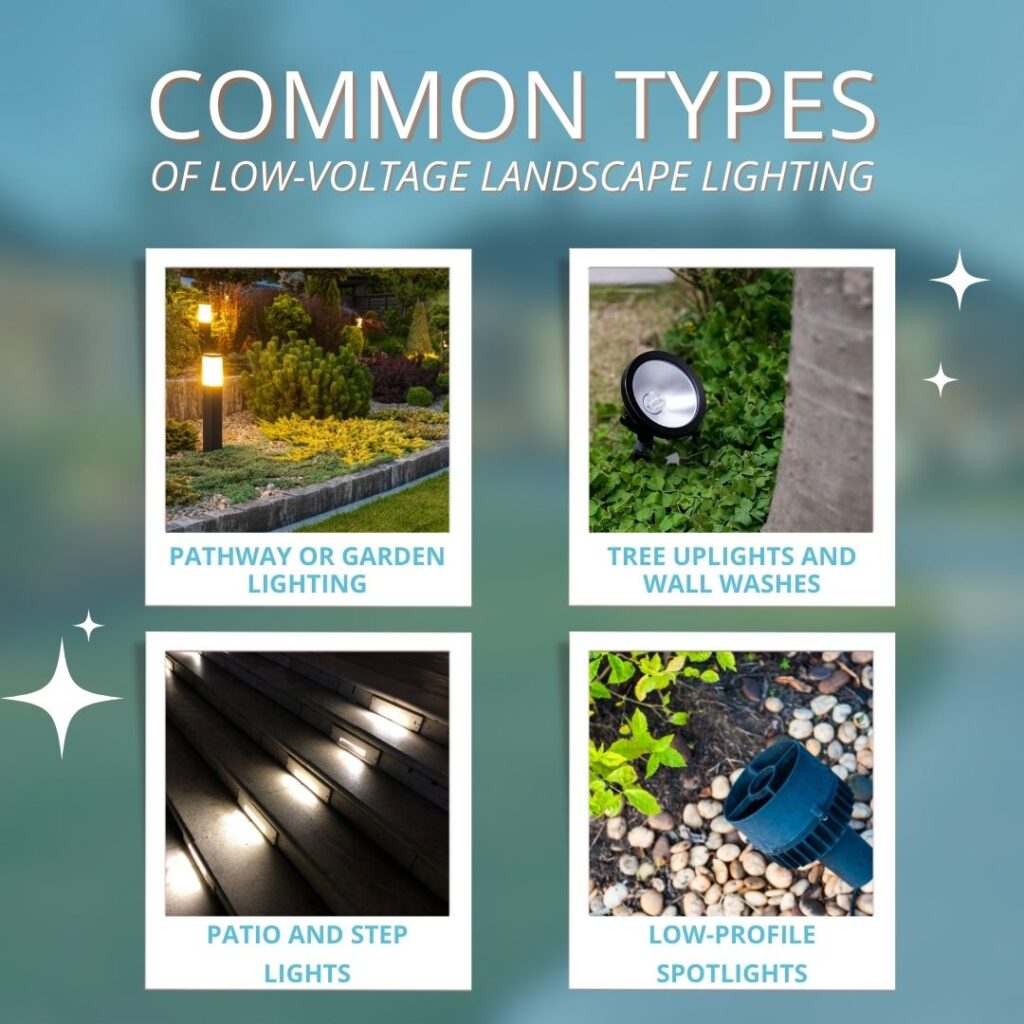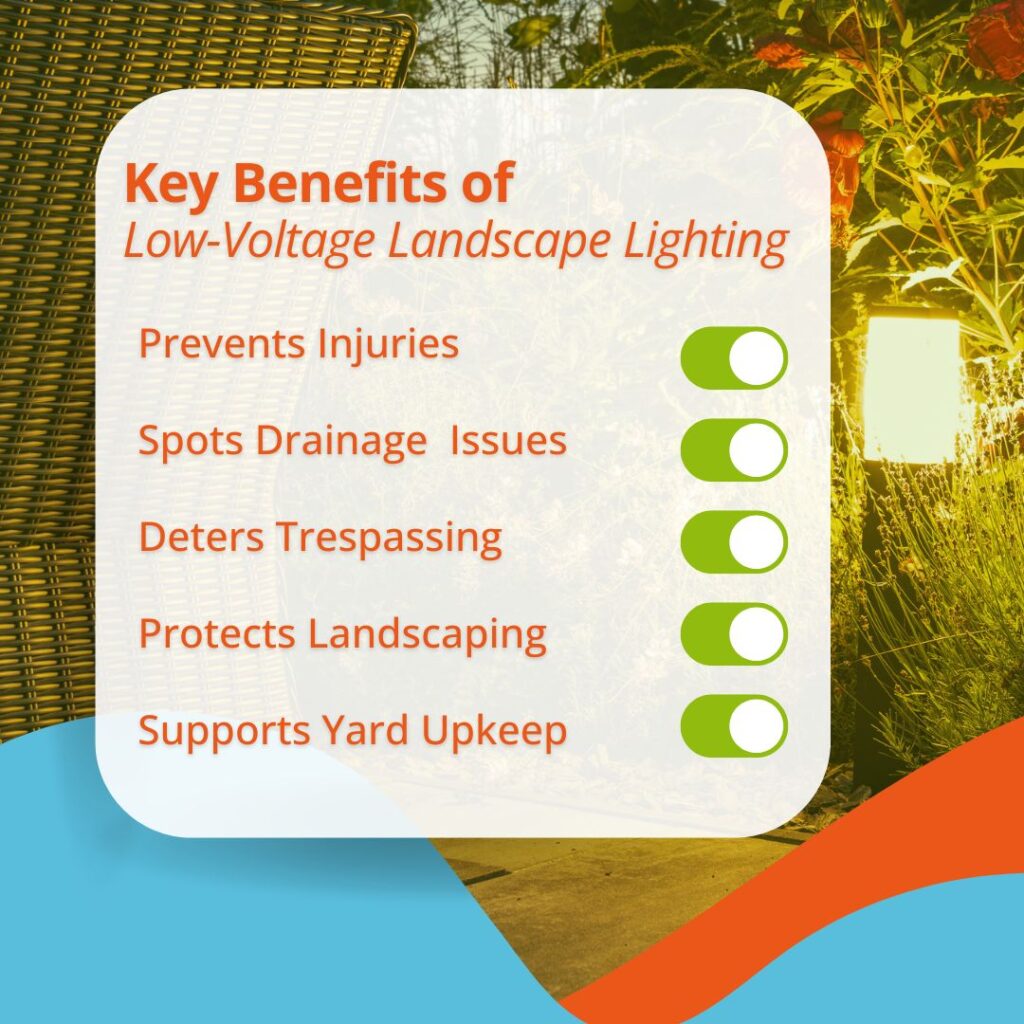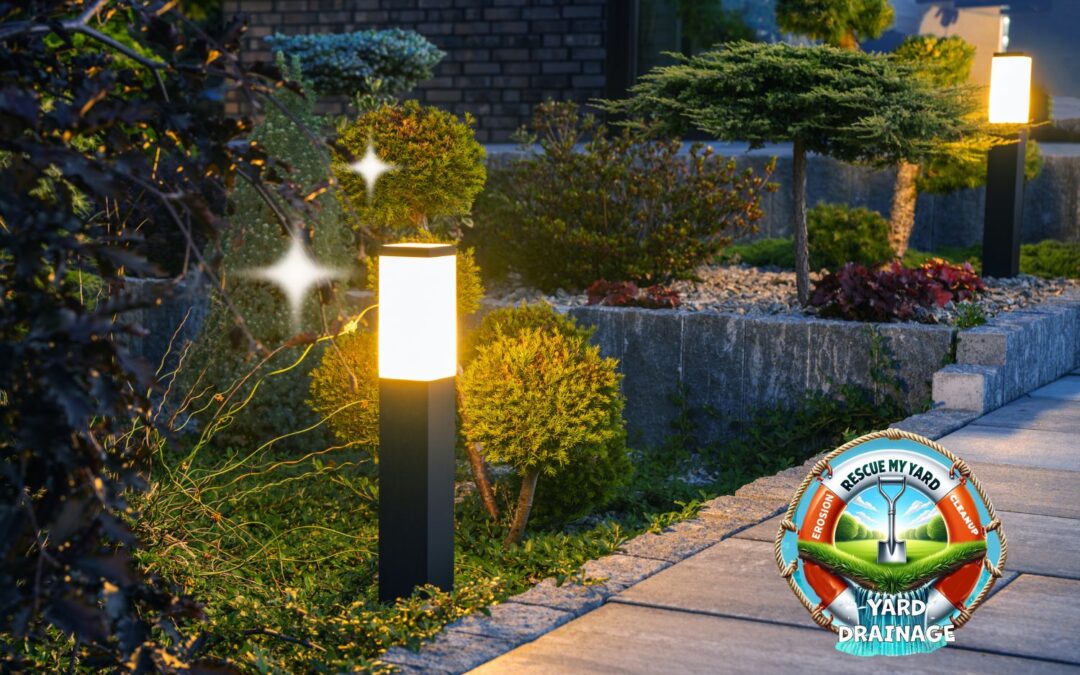Outdoor lighting often gets treated as a finishing touch, but it can do much more than improve the look of your yard. When planned with purpose, low-voltage landscape lighting actually helps protect your home, your landscaping, and your long-term property value.
For homeowners dealing with erosion, poor drainage, or overgrowth, lighting may not be the first solution that comes to mind. But when paired with smart yard design, it plays a much bigger role in the health and safety of your space than you might expect.
What Counts as Low-Voltage Landscape Lighting?
Low-voltage lighting solutions use a transformer to reduce your standard household current (120 volts) down to just 12 volts. This makes it a safer and more energy-efficient option for outdoor areas, especially those near plants, walkways, or water features.
You’ve likely seen this type of lighting used for:
- Pathway or garden lighting
- Tree uplights and wall washes
- Patio and step lights
- Low-profile spotlights
Because it uses less power, low-voltage lighting can be safely installed near structures, grading zones, and even drainage systems, as long as it’s done correctly.

Why Lighting Is About More Than Curb Appeal
Before treating outdoor lighting like an afterthought, it’s worth seeing what it can do for you and your home. Here’s what we think you should know:
1. It Helps Prevent Injuries in High-Risk Areas
Poor lighting is one of the most common contributors to nighttime trip hazards. When slopes, roots, or soggy areas are hard to see, guests are more likely to get hurt, and your landscaping is more likely to suffer damage.
2. It Reveals Drainage Problems After Dark
Most drainage issues happen quietly, especially at night or after storms. Low-voltage lighting helps expose standing water, slow runoff, and areas where drainage systems aren’t working as expected. With better visibility, you can catch problems before they grow.
3. It Deters Trespassing and Property Damage
Research shows that improved outdoor lighting can reduce property crimes by up to 39%, especially in low-visibility areas like side yards and driveways.
Keeping vulnerable access points lit, such as driveways, side yards, and sheds, lowers your risk without requiring harsh floodlights.
4. It Defines and Protects Landscaping Work
Fresh mulch, cleared beds, and newly planted areas are more likely to thrive when you can monitor them. Lighting helps define these spaces, so you can spot early signs of erosion, flooding, or overgrowth.
How Lighting Supports Long-Term Yard Health
Low-voltage lighting can feel like a design feature, but it actually helps your entire yard function better when paired with the right services.
At Rescue My Yard, we often recommend lighting as a next step for customers who’ve invested in drainage, erosion control, or property cleanup.
Here’s why it works so well together:
Lighting Makes Drainage More Visible and Manageable
If you’ve had a dry creek bed, French drain, or swale installed, you want to know that it’s working. Lighting those areas gives you a clear view during and after heavy rain.
You’ll see where water collects or moves, which helps you identify clogs or shifts in grading before they cause bigger issues.
Erosion Zones Stay Top of Mind
When we install solutions like erosion blankets or slope stabilization, those areas benefit from visibility. Lighting makes it easier to walk the property and spot areas where runoff is washing things away again.
Instead of waiting for damage to show up later, you can catch it early.
Cleaned-Up Areas Stay Maintained
After a major overgrowth cleanup, your property finally looks the way it should. Lighting helps keep it that way.
When brush-cleared paths, graded slopes, or restored beds are well-lit, it’s easier to notice when something is growing back that shouldn’t be. That means less surprise maintenance.
Lighting doesn’t replace yard work, but it strengthens the results of everything else you’ve invested in. When you combine outdoor lighting with strategic yard restoration, you’re setting your property up for long-term success.

Other Common Questions About Landscape Lighting
Will this lighting hold up during storms?
Yes, most low-voltage systems are built for the weather. The fixtures, transformers, and wiring can all be installed with outdoor safety standards in mind. We still recommend placing them in areas that drain well and aren’t prone to standing water.
What’s the difference between solar and low-voltage lighting?
Solar lights work independently, while low-voltage lights run on a consistent power source. Solar options tend to fade faster, especially in wooded or shaded yards. Low-voltage systems are more dependable and customizable.
Is this going to increase my electric bill?
Not by much. According to the Department of Energy, switching to LED landscape lighting can reduce outdoor energy use by up to 80% compared to older systems. Plus, most setups include smart timers or motion sensors to cut down on wasted electricity.
When to Call a Professional
If your yard already struggles with standing water, slope issues, or heavy overgrowth, lighting needs to be part of a broader property strategy. Adding lights without addressing the root cause of erosion or drainage can lead to electrical hazards, fixture damage, or wasted time and money.
Rescue My Yard brings an integrated approach. We don’t just install lights and leave. We evaluate how lighting fits into your overall landscape health. That includes:
- Avoiding placement in known runoff zones
- Protecting wiring from root systems and overgrowth
- Using lighting to reinforce cleared paths, defined borders, and new grading
- Helping you monitor high-risk areas at night
If you’ve already taken steps to improve your property, lighting can extend the value of that work. And if you’re not sure where to start, let our team evaluate your outdoor space and design a solution that keeps it safe, beautiful, and easier to manage.
Conclusion
Low-voltage landscape lighting does more than illuminate your yard. It protects the work you’ve done, helps you spot risks early, and contributes to a safer, more manageable property overall. Whether your goal is to prevent erosion, keep intruders away, or simply see where you’re stepping, the right lighting plan can support it.
Let Rescue My Yard help you make your yard safer and smarter, one improvement at a time.

